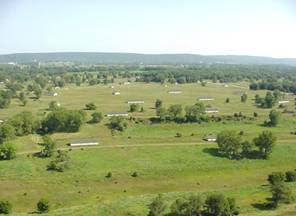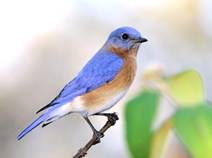 Nearly the entire 500-acre parcel targeted by the Wisconsin Department of Natural Resources (WDNR) administration for an off-road vehicle track and gun range at Badger Army Ammunition Plant – including a parking lot, staging area, vehicle wash station and support buildings – has been identified by WDNR biologists as a High Priority Grassland Bird Parcel. (map)
Nearly the entire 500-acre parcel targeted by the Wisconsin Department of Natural Resources (WDNR) administration for an off-road vehicle track and gun range at Badger Army Ammunition Plant – including a parking lot, staging area, vehicle wash station and support buildings – has been identified by WDNR biologists as a High Priority Grassland Bird Parcel. (map)
A major portion of the area has also been identified by WDNR experts as one of two ecologically significant sites at Badger that “warrant high protection and/or restoration consideration during the development of the property master plan.”
The highest quality habitats for grassland birds are found in the extensive non-native (surrogate) grasslands in the south-central tract and north-central section of Badger. High-quality grassland bird habitat with a moderate shrub component is located in the northeast section of Badger.
These areas should be contiguous and when combined with the restoration potential of the surrounding property and landscape would offer significant management opportunities for viable populations of grassland and shrubland birds, according to WDNR biologists.
Prairie once occupied approximately 2.1 million acres in Wisconsin. Now, approximately 2,000 acres remain – less than 0.1%. Of these, only those prairies that occurred at the wet and dry ends of the soil spectrum survived. Virtually all deep-soil Mesic Prairies were converted to agricultural or residential uses.
The Dry Prairie within the south-central parcel of Badger has been the focus of many years of maintenance and restoration by volunteers and members of the Sauk Prairie Conservation Alliance. The site is unique as remnant plant communities are very rare at Badger and therefore warrants special management consideration in future master planning efforts, WDNR experts said.
Such sites, in conjunction with the large expanse of surrogate grassland making up the entire Badger property, offers an opportunity to restore two globally rare natural communities and improve habitat for many grassland, savanna, and woodland plant and animal specialists, especially grassland birds.
 The Eastern Bluebird is among the many grassland and shrubland birds found at Badger. Two successful bluebird trails with more than 80 houses are carefully maintained and monitored by members of the Bluebird Restoration Association of Wisconsin. Every week, beginning in early spring, these dedicated volunteers carefully record the number of eggs, hatches, and fledglings.
The Eastern Bluebird is among the many grassland and shrubland birds found at Badger. Two successful bluebird trails with more than 80 houses are carefully maintained and monitored by members of the Bluebird Restoration Association of Wisconsin. Every week, beginning in early spring, these dedicated volunteers carefully record the number of eggs, hatches, and fledglings.
Unfortunately, the bluebird trails at Badger are located on the same land parcel that has been targeted for a possible ATV track and gun range. If approved, noise from these activities will hamper the detection of songs from birds of the same species, making it more difficult for them to establish and maintain territories, attract mates, and/or maintain pair bonds.
“The highest quality habitats for grassland birds are found in the extensive non-native grasslandsin the south-central tract and north-central section of the Sauk Prairie Recreation Area.”
WDNR Bureau of Endangered Resources, 2011
REFERENCES:
- Bluebird photograph by Debbie McKenzie.
- Wisconsin Department of Natural Resources, Regional & Property Analysis: Sauk Prairie Recreation Area, July 2012.
- Wisconsin’s Natural Heritage Inventory Program, Bureau of Endangered Resources, Rapid Ecological Assessment for the Sauk Prairie Recreation Area, December 2011.
- Wisconsin Natural Resources Magazine, Kent D. Hall, Bluebirds on the rebound, Continuing commitment by a growing number of volunteers helps bluebird populations recover in Wisconsin, June 2010.

